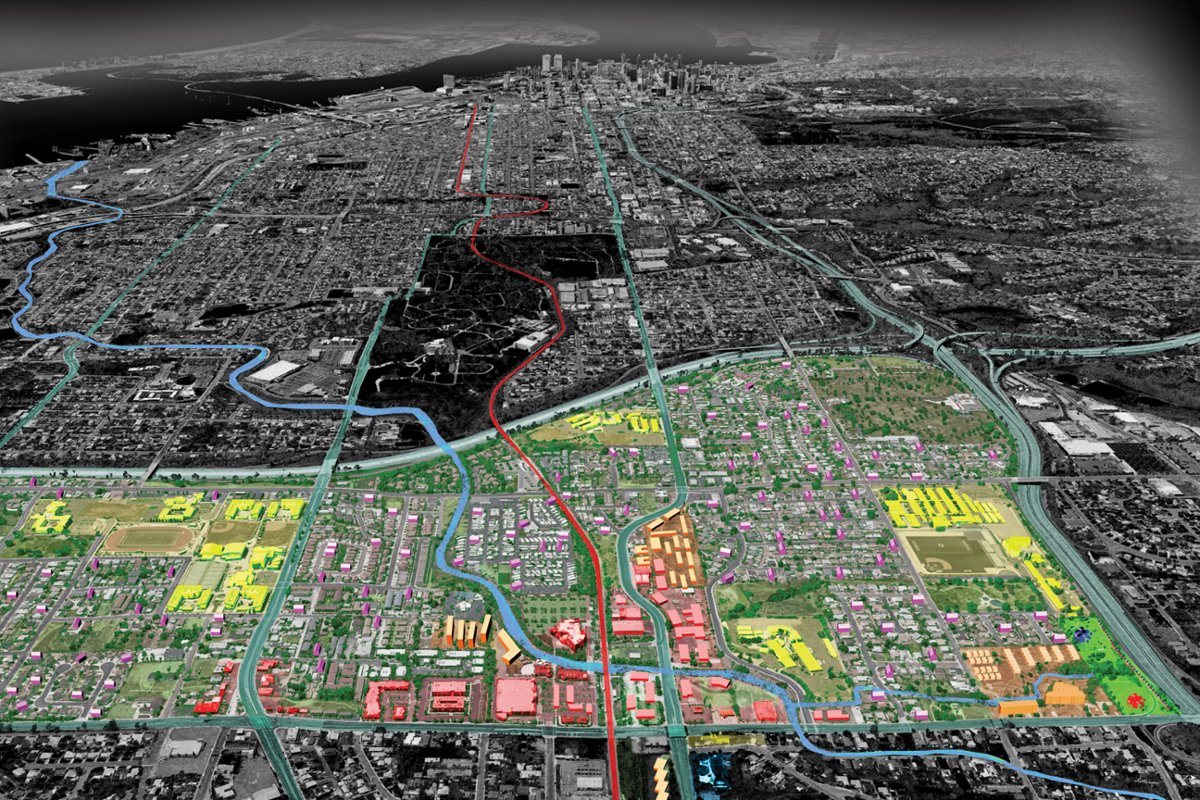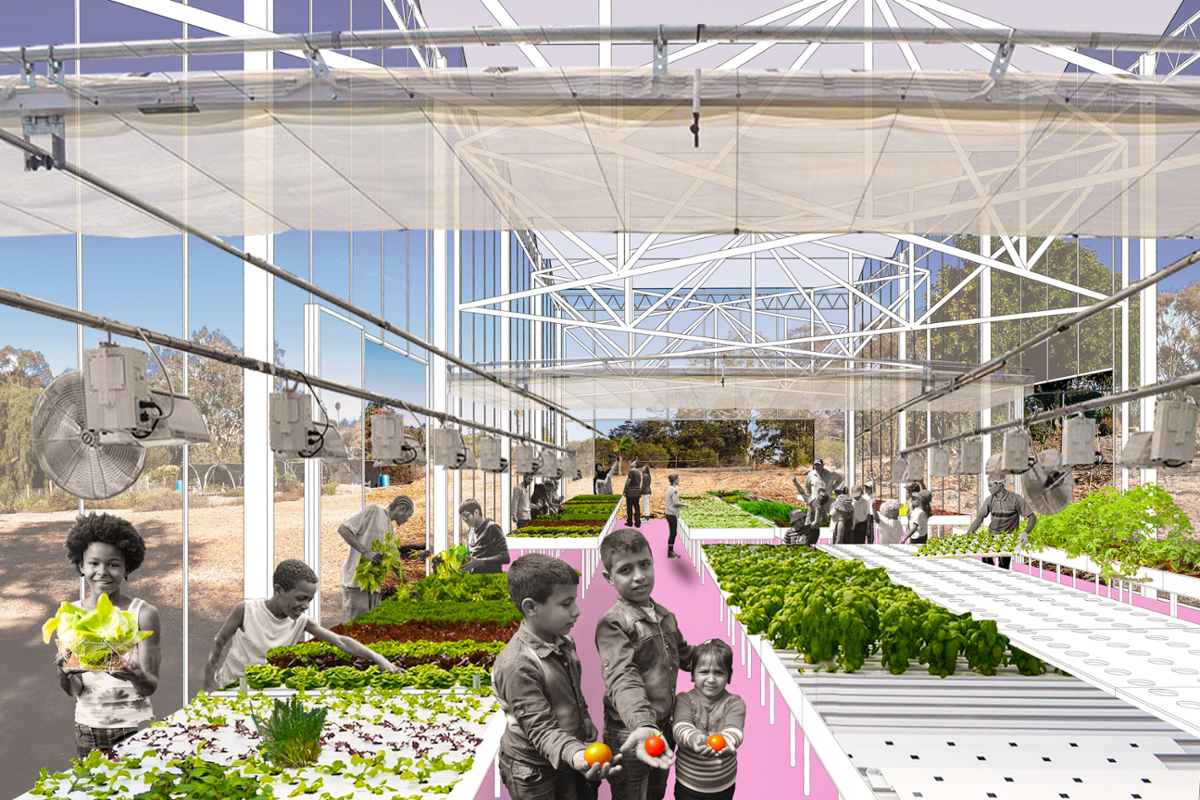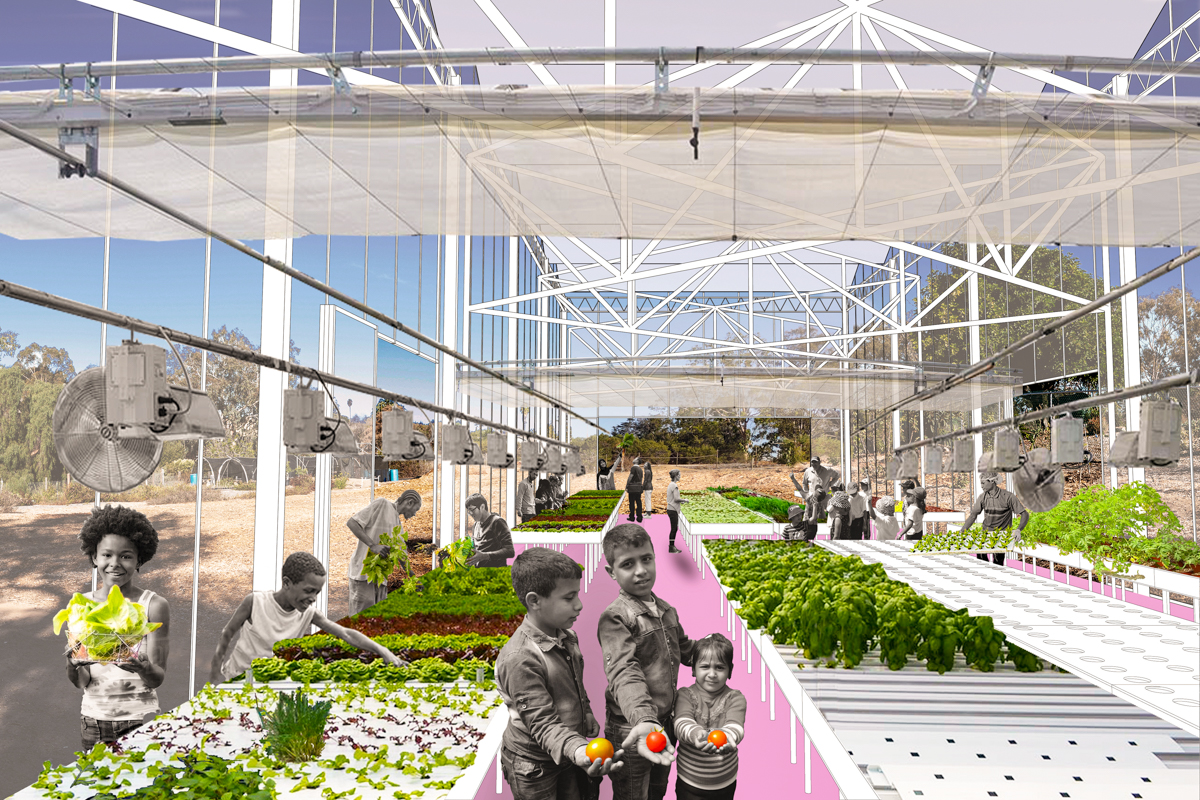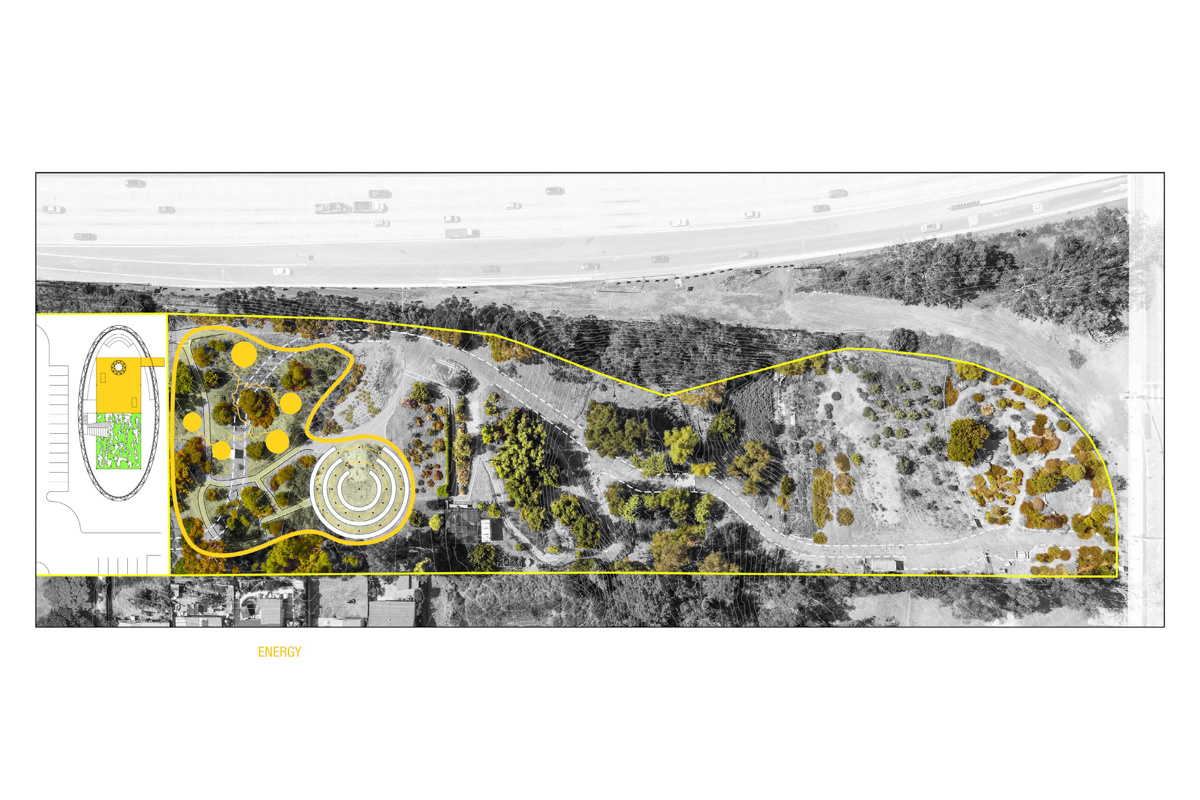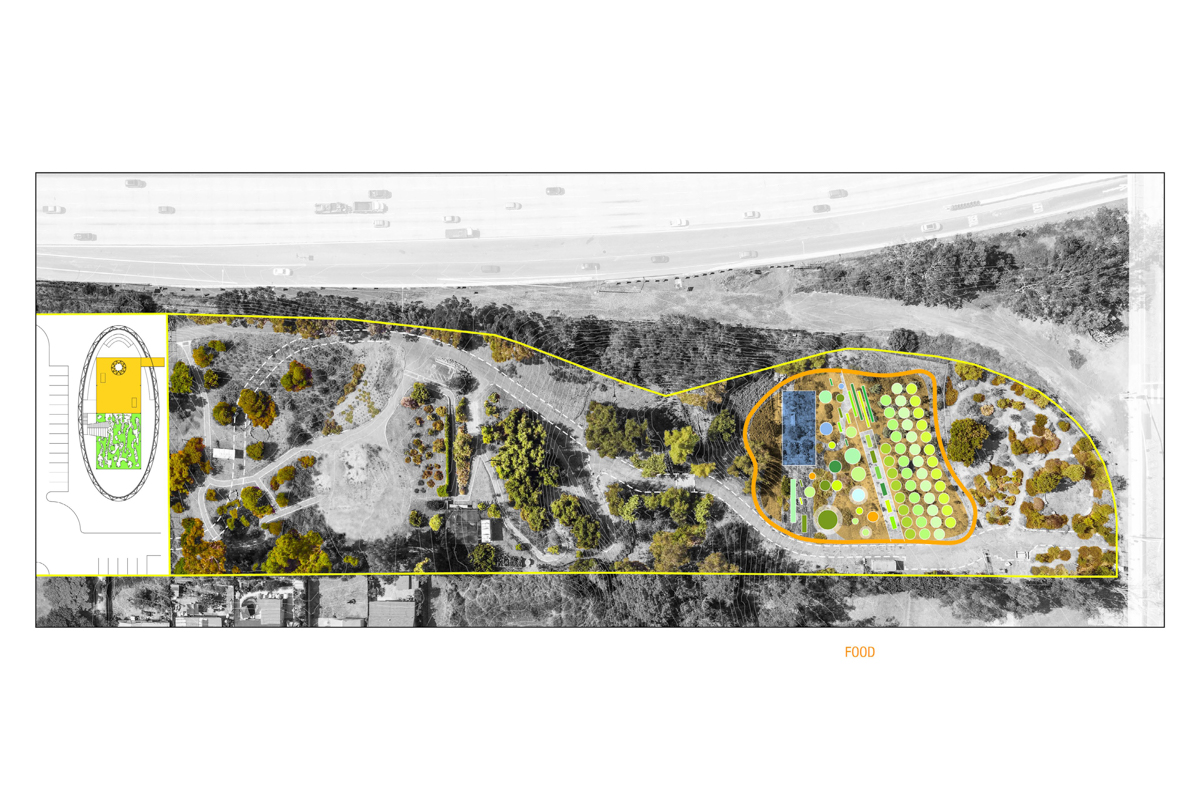EarthLab Is an Outdoor Climate Action Park
Designed by leading informal science educators, climate scientists, environmental designers, architects and landscape architects, the EarthLab is comprised of learning stations that focus on energy, water and food; conservation infrastructure; and a field-based environmental design/makers lab. The Center on Global Justice is partnering with Groundwork San Diego and the San Diego Unified School District to update the EarthLab masterplan through a community-based participatory design process, funded by the Surdna Foundation.
We are partnering with Groundwork San Diego to transform a four-acre site, owned by the San Diego Unified School District, into an open-air environmental classroom and climate action park. Leveraging the resources of leading regional education partners such as University of California San Diego, the Fleet Science Center and the Birch Aquarium at Scripps Institution of Oceanography, and through the delivery of unique hands-on STEAM education, technical training and mentoring programs, EarthLab advances a new model of K-12 experiential environmental education for the youth of Encanto, and opens access to higher education, career pathways and quality jobs. The EarthLab places environmental education at the center of economic, energy, and health equity, inspiring the diverse residents of the Encanto neighborhoods to become stewards of their own environment and the planning of their communities.
Thousands of Encanto youth and their families already circulate through the EarthLab each year. As the new masterplan is advanced the EarthLab’s capacity will increase to serve as a K-12 resource for the 6 public schools within walking distance of the site, becoming the first Climate Action Park of its kind.
Community Design Process
The EarthLab Masterplan illustrates what can happen when a grass-roots environmental nonprofit (Groundwork San Diego) in a disadvantaged community, a local school district (San Diego Unified School District and a research university (UC San Diego) partner to co-develop a new type of educational public space.
With the support of the Surdna Foundation, CGJ and Groundwork mobilized the community design process to envision the EarthLab programmatic and physical masterplan. We summoned diverse demographic groups across the Encanto neighborhoods, including community leaders, area residents, school teachers, businesses, faith-based institutions. These meetings produced the initial imagination and aspiration for the programmatic composition of The EarthLab Masterplan, the specific learning objectives and pedagogical strategies, as well as the physical environments and exhibits to support these programs and activities.
The participatory design process included a set of workshops with school leaders, educators, children and their families, industry representatives and design professionals to brainstorm preliminary design concepts. The EarthLab has been designed by leading informal science educators, climate action scientists, museum designers, architects and landscape architects.
Exhibits
The EarthLab Masterplan calls for the installation of six educational exhibits (activity stations) informed by food/water/energy topics under the overarching theme of climate action and organized through principles of indigenous practices. These exhibits are designed to support formal and informal learning modules at the EarthLab, and will elevate Groundwork’s theory of learning, as a model for other science educators seeking to integrate in-door (methodological) and out-door (experiential) learning. Specifically, these exhibits are designed with supporting tools, environments and playgrounds to guide students and users to: ask questions, define problems, plan and carry out investigations, analyze and interpret data, construct and explain experiences, develop and use replicable models, and design solutions to challenges that climate change excerpts in their environment.
All exhibits are designed as interactive-environments, flexible and adaptable spaces where different types of experiential educational activities (technology-conservation-culture) can co-exist, linking play and knowledge. Flexibility of use and adaptation is important so that even without direct guidance, visitors will engage with energy knowledge through self-play and interaction.
An important aspect of the exhibits is that all of them have been designed to facilitate their reproduction in miniature when students are back in their classrooms. Their formal attributes, geometric patterns, shapes and materials, etc., inform educational design tools and experiments that enable teachers to elaborate on the data that students have collected out-doors. The main design features of each of these exhibits/environments are shown here.
